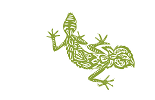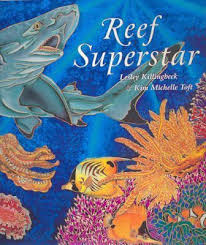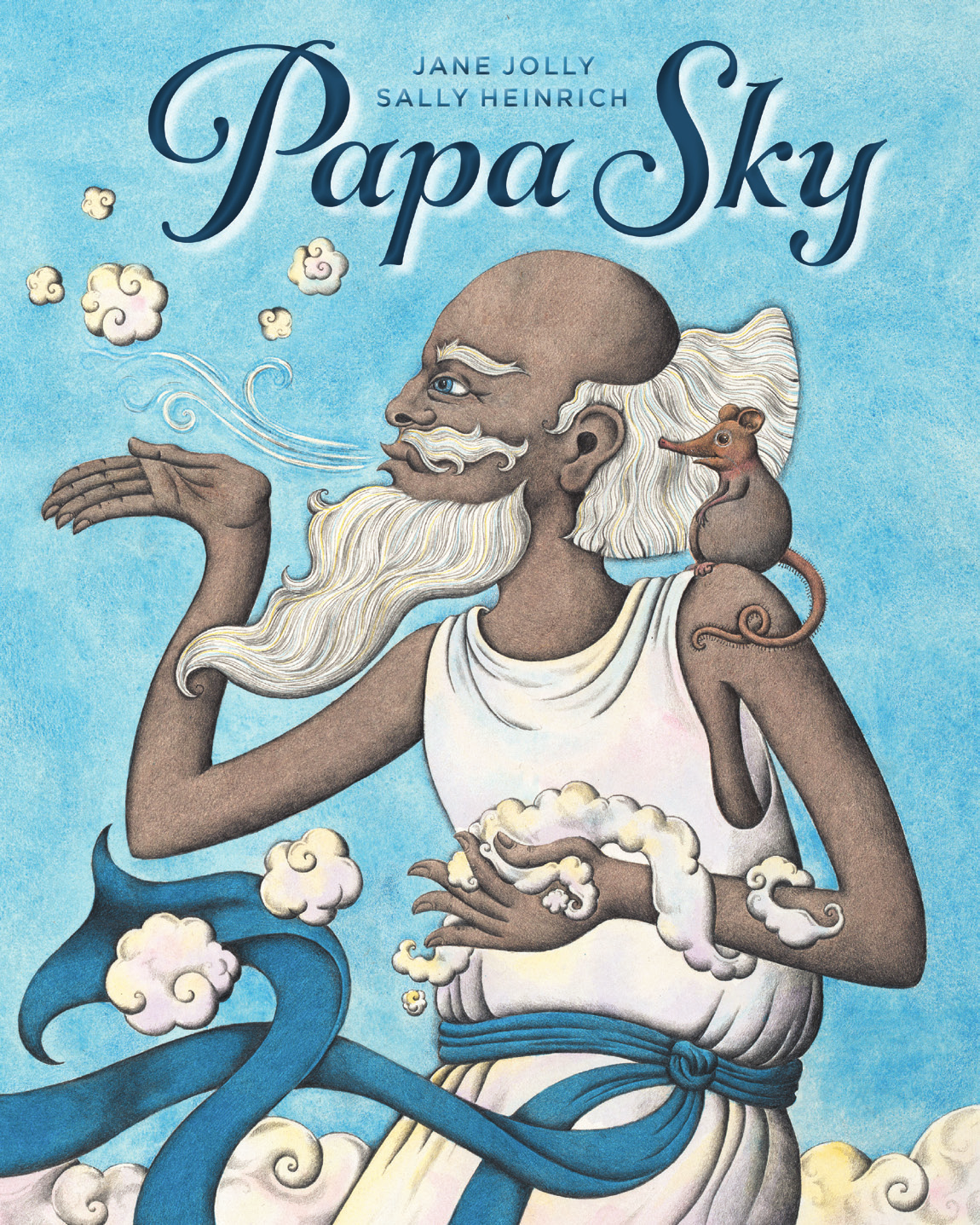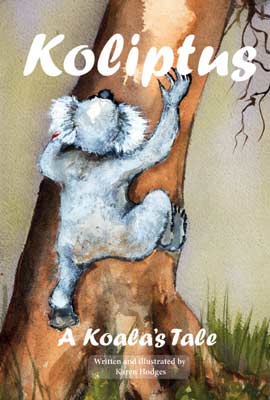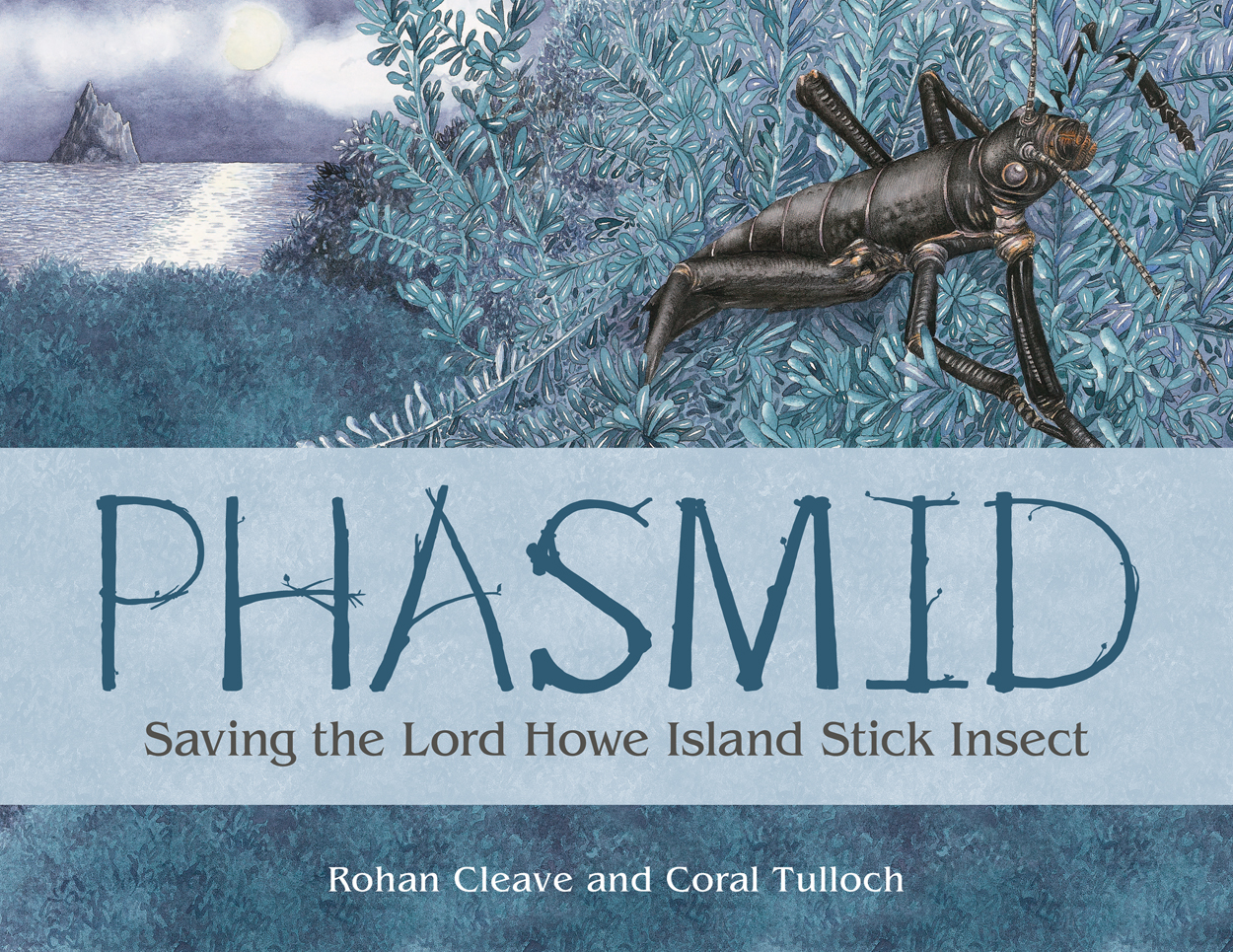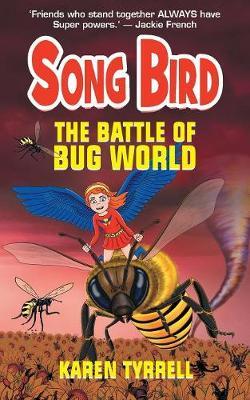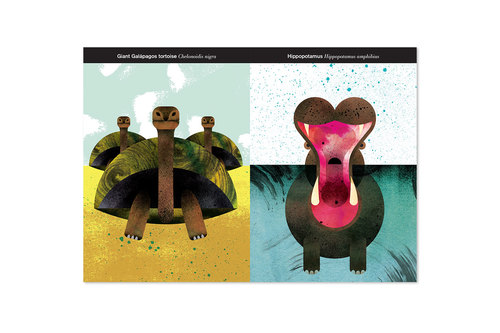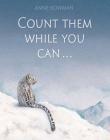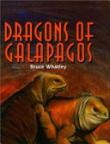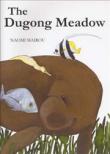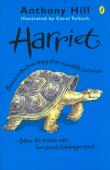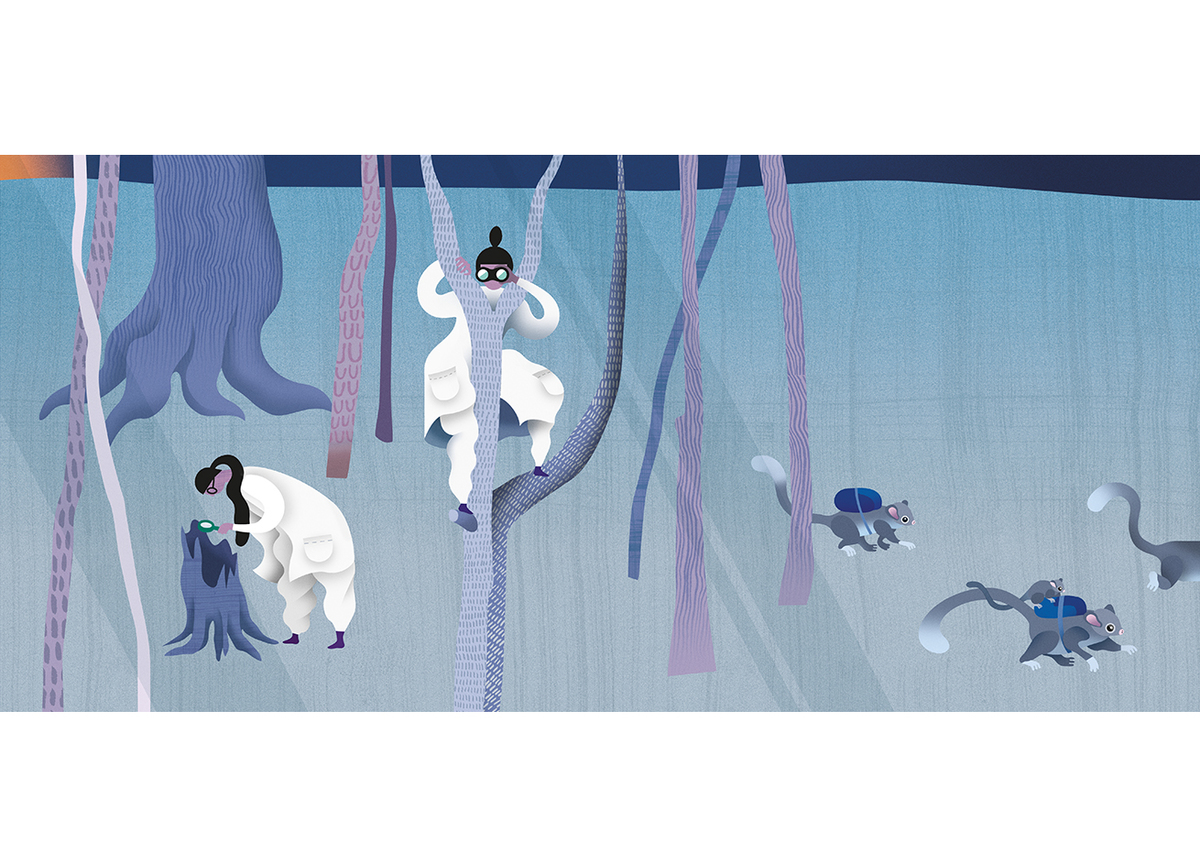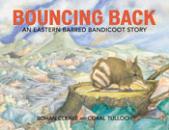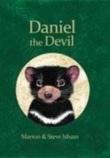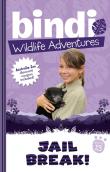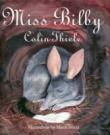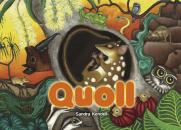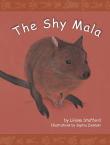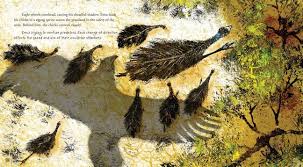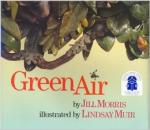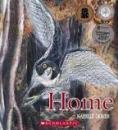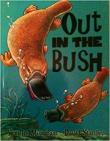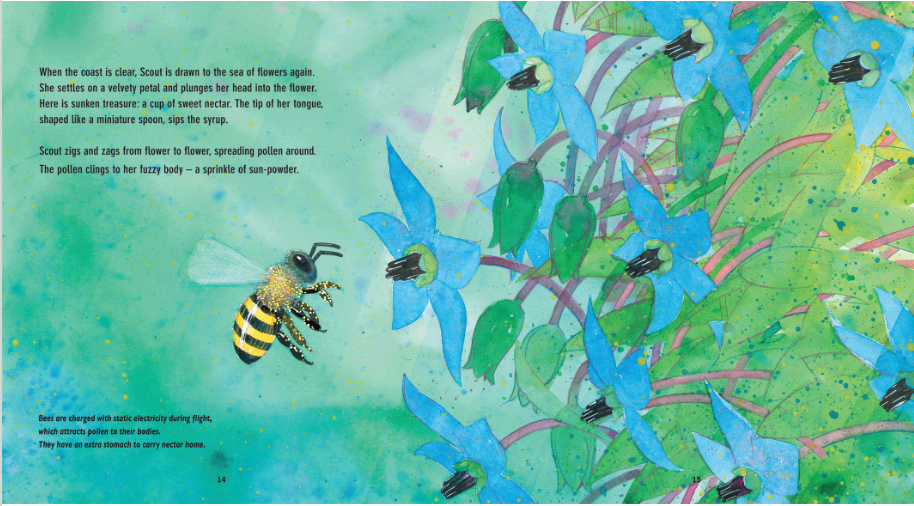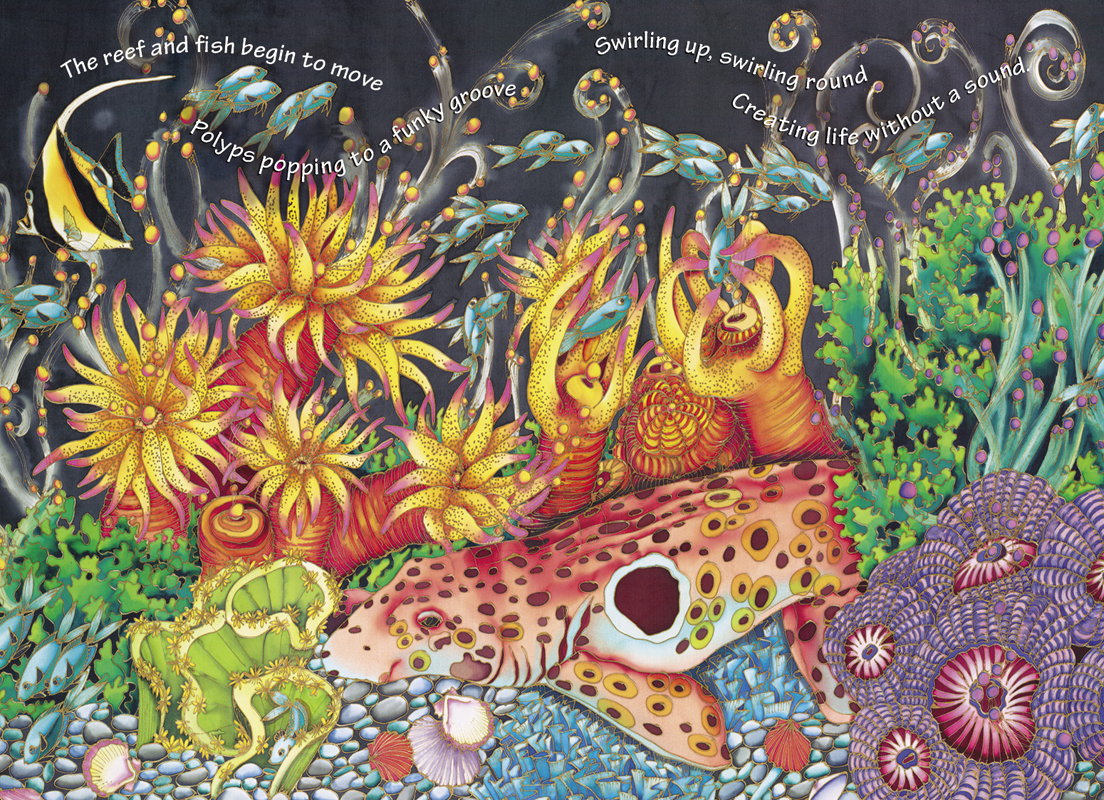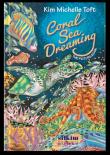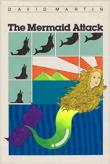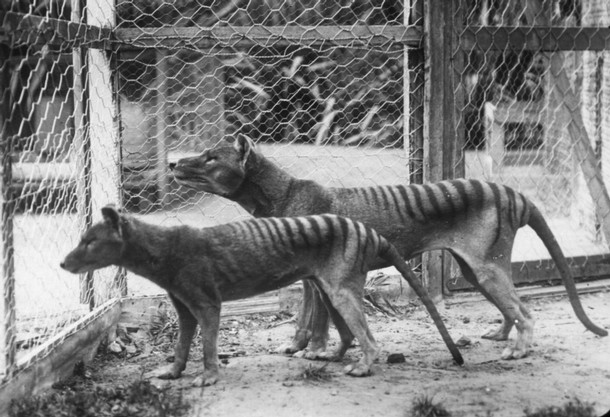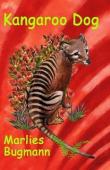AustLit
Researched, compiled and written by Amy Cross
- An Overview
- A Brief History Part I: Settlement to Post-War (Forthcoming) In Progress
-
A Brief History Part II: 1970s to Present Day (Under Development)
In Progress
- A Brief History of the Environment in Children's Literature, Part II: 1970s to Present Day
- 1970s and 1980s: Conservation at the Forefront
- Conservationism: An Environmental, Political and Social Movement
- The 1990s
- A New Millenium
- Contemporary Contexts: Politics, Culture and Literary Criticism
- — Ecocriticism and "Environmental" Literature
- — Postmodernism, Globalisation and Urban Landscapes
- — The Anthropocene
- Contemporary Concerns, Forms and Genres
- — Sustainability
- — The Future
- Fact, Fiction and Genre Mixing
- Explore Further
- Aboriginal Stories and the Environment
- Landscapes and Settings
- Biodiversity and Threatened Species
- Caring for the Environment
- Sustainability
- Built Environments
- Environmental Degradation
- Disasters, Climate Change and Global Warming
- Poetry, Film and Other Narrative Forms
- Education and the Australian Curriculum
- Authors, Illustrators and Publishers
- Award-winning Environmental Literature
-
Bibliography
- List of Works Cited
- Primary Sources - Fiction
- — Picture Books
- — Children's Fiction
- — Young Adult Fiction
- Primary Sources - Other Formats
- — Drama and Musicals
- — Film and Television
- — Mixed Anthologies and Prose
- — Poems and Poetry
- Primary Sources - Non-fiction
- — Autobiographies and Biographies
- — Information Books and Non-fiction
- Secondary Sources
- Project Team and Acknowledgments
-
Biodiversity is the variety of all life forms on earth - the different plants, animals and micro-organisms and ecosystems of which they are a part.
(Dept. E. E. [2017])
Biodiversity conservation is a significant concern in Australia, with many regions, ecosystems and species currently under threat. As such, representations of biological diversity are prolific in children's picture books; less so in fiction and novels. The format and diverse methods of illustration easily allow such representations to be a part of the story, either explicitly or implicitly. Also common is a discussion of biodiversity and its conservation, in the endpapers of picture books.
This section focuses on books that highlight biodiversity, either through representations of animal species (their habitat and other species encounters), or through preservation of particular ecosystems.
See Environmental Degradation for a closer look at threats to biodiversity.
EDITORS: this Header component is linked to in the Explore section of the following WORK record(s): Reef Superstar - EDITORS: this Header component is linked to in the Explore section of the following WORK record(s): Koliptus : A Koala's Tale - -
While stories about nature, ecology or animals are not inherently environmental, the plight of the animals in children's stories often implicitly (or explicitly) details their biology and ecosystems, and the efforts to save them. Picture books can be particularly detailed regarding ecosystems and biodiversity of a region as the illustrations provide opportunities to show biodiversity. Picture books by Kim Michelle Toft, for example, are incredibly detailed depictions of ocean and the marine life it supports, see Reef Superstar.
-
In Papa Sky, fictional cloud forests are created by a being named Papa Sky. When he falls to earth, a diverse range of animals, primarily endangered species, assist Papa Sky to return to his home. It is an implicit look at the impact of global warming on cloud forest environments, many of which contain declining species. Tim Flannery's The Weather Makers is referenced in the verso.
One Small Island by Alison Lester and Coral Tulloch, is the story of the unqiue Macquarie Island, the environmental degradation it has suffered and attempts to renew and regenerate the ecosystem.
Coral reefs, river systems (particularly the Murray-Darling Basin), and the loss of bees are all topics featuring in this section. Try also searching for ecosystem, environmental degradation, biodiversity, or species conservation.
-
Many picture books, including non-fictions and narrative non-fictions, include factual information about the animal protagonist. It is this information in the endpapers, which is often accompanied by conservation messages from the author or illustrator is what distinguishes 'animal stories' from environmental stories.
In children's fiction, the discovery, and usually rescue of animals, is more anthropocentric. That is, the rescue of the animal and learning about its biology and habitat, is often about developing the human character and their growth as an 'ecocitizen'. See Conservation and Sustainability for a closer examination.
N.B. Information on 'status' in the tiles below about endangered species is taken from the IUCN Red list at www.iucnredlist.org, and Aust. Gov. Department of Environment and Energy at http://www.environment.gov.au/cgi-bin/sprat/public/publicthreatenedlist.pl. Information is correct as of December 2017.
-
Animal protagonists are common in narratives with environmental themes. The degree to which the animal is humanised or anthropomorphised varies greatly. Anthropomorphism is often used in environmental literature to imagine the fears experienced by animals and as a way for animal characters to have a voice. It is also a way to conceive emotions in animals, which can elicit empathy in readers and in turn help to develop environmental awareness and concern for wildlife. However, it can also be problematic if the narrative suggests that human intervention in animal welfare is unnecessary, particularly if the anthropomorphised characters successfully problem-solve their way out of situations, which real animals are unable to do.
Other narratives might convey the dangers encountered or the importance of wildlife habits without placing human emotions on the animal itself. See for example Circle by Jeannie Baker, which follows the migratory pattern of the godwit bird.
-
There are many animal species currently endangered, threatened, vulnerable and or extinct, both in Australia and internationally. Such animals are often written about in children's picture books that aim to encourage conservation and build environmental awareness.
Koliptus : A Koala's Tale is a children's novel written and illustrated by Karen Hodges, a wildlife carer of koalas. The description on the back of the book includes the statement: "This is a must-read for young Australians to become aware of our affect on our native animals, before it's too late."
The story is set in Northern New South Wales, a State where koalas are listed as 'vulnerable'. Two koalas Koliptus, and Midgie encounter every kind of threat experienced by the species as a whole. At any given point, one of the koalas is threatened by bushfires, disease, hunters, urban developers, poachers, and dogs. The narrative is written such that Koliptus interacts with the koalas and other bush animals and communicates an understanding of the threats befalling the animals. For example, after he has returned to his territory to find his trees had been cleared: "Koliptus sat on a stump and stared at the devastation before him. He had no where to go, like so many koalas and other native animals before him, he was left to perish on the wasteland that people call suburbia." (p.60) The narrative continues in detail about what the area will look like in the future, complete with houses, dogs - the "natural enemy to the koala", cars, and "worst of all, people." The story is a clear call for awareness about the struggle of koalas and for protection of the species.
-
Endangered Australian animals as a theme is common in picture books and children's fiction, though often it is the cute or 'cuddly' animals, that are written about, such as koalas. However, as more real world scientists and academic or government research organisations contribute to children's book publishing, there is increased variety in the endangered or threatened species that are written about, which are also vital to biodiversity. See for example Phasmid : Saving the Lord Howe Island Stick Insect by Rohan Cleave (Melbourne Zookeeper, and researcher on the Lord Howe Island Stick Insect Recovery program), published by CSIRO Publishing; or, Zobi and the Zoox by Scale Free Network, an art and science collaboration, that resulted in a picture book about microbes and coral polyps.
See in particular the tiles below about 'Australian Wildlife Under Threat' and 'Daily Life of Australian Animals'.
-
Species decline as a result of climate change is an emerging topic in children's fiction. One example is The Battle of Bug World. In this book, an evil boy named Frank has taken the Earth's ozone and kidnapped all of the honey bees to help build his insect army. The result is superstorms, climate change, dying fruit and flowers, and food shortages. Song Bird the superhero helps stop Frank, with the help of her genius friend Amy who is wheel-chair bound. Song Bird's sister, Raven, who belongs to 'Green Team' - a United Nations army of environmentalists - has also been kidnapped by Frank. Throughout the book, there are boxed 'Newsflashes'. They have different font and text size and appear to be direct environmental messages to the reader, or at least they mimic current news topics about global warming, scientists and governments. There are pervasive themes of sustainability as well, particularly around greenery, vegetable gardens and bees. The bees must be rescued to save the world from the extreme weather resulting from climate change.
Species decline is a frequent theme climate change books - see Disasters, Climate Change and Global Warming.
-
-
(Display Format : Landscape)
Animals: Endangered and Extinct
Below are examples of books about endangered animals (including acquatic species) in general, as well as international species. Australian species are examined in other tiles.
Endangered animals as a subject are often considered in alphabet books and guides.
To search AustLit for endangered species search "endangered animals" or "species conservation"; or try specific animals, such as 'wombat' or 'bandicoot', however it is worth noting that a book may be about an animal but not its conservation status or vulnerability.
Image by Marc Martin, from The Curious Explorer's Guide to Exotic Animals, found online.
-
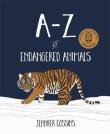 This image has been sourced from Booktopia4689714006747999459.jpg
This image has been sourced from Booktopia4689714006747999459.jpg A-Z of Endangered Animals Jennifer Cossins , 2017 single work picture book information book
A-Z of Endangered Animals Jennifer Cossins , 2017 single work picture book information bookAbstract: "This beautifully illustrated full-colour picture book is packed with interesting facts and is perfect for young conservationists and students alike with a keen interest in the world around us. On this journey through the alphabet, you will encounter some of the world's most beautiful, rare and endangered animals, from the majestic Amur tiger and the curious kakapo, to the misunderstood Tasmanian devil and the shy zebra duiker."
Each animal page (or letter of the alphabet) contains its current conservation status and population figures, as well as other facts and descriptive information about the species. This is a non-fiction book.
-
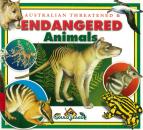 6212715160259201793.jpg
6212715160259201793.jpg Australian Guide to Endangered Animals Sheree Marris , 1999 single work information book
Australian Guide to Endangered Animals Sheree Marris , 1999 single work information bookAbstract: Australia has lost more species of mammal than any other continent in the world and many other Australian animals are endangered. This book highlights both the folly of European approach to the Australian environment and the work of volunteers, scientists, farmers and environment working toward saving threatened species.
This book looks at over sixty species. It examines the reasons for their decline and what is being done to save them. It covers a broad range of interesting animals. It introduces a complex topic in a positive, realistic and simple way.
-
 5886217760750379231.jpg
5886217760750379231.jpg Chelonia Green, Champion of Turtles Christobel Mattingley , 2008 single work children's fiction
Chelonia Green, Champion of Turtles Christobel Mattingley , 2008 single work children's fictionSpecies: Green Turtle
Conservation Status: Endangered
Abstract: Chellie was very small when she first saw the beautiful green turtles with the scientific name so close to her own. Every year she would watch them swim in the sea and make their long journeys up the beach to lay their eggs. But one day, Chellie makes a grim and horrible discovery, a discovery that turns her life upside down and forces her to act.
-
Abstract: This is a seemingly sweet book about baby animals and their mothers. But each of the animals is listed as endangered, and some are already extinct in the wild. The gentle verses describe the habits of these creatures, while information boxes point out the bleak facts of their near extinction.
-
 Image courtesy of Penguin Books Australiaanimals_FXG7.jpg
Image courtesy of Penguin Books Australiaanimals_FXG7.jpg The Curious Explorer's Illustrated Guide to Exotic Animals A to Z Marc Martin , 2013 single work picture book
The Curious Explorer's Illustrated Guide to Exotic Animals A to Z Marc Martin , 2013 single work picture bookAbstract: From armadillo to zebras, chameleons to quetzals, these exotic animals will surprise and delight. No curious explorer should be without Marc Martin's stunning celebration of strange and beautiful creatures from all over the world.
While it is not discussed in the text, the careful reader will notice that most of the animals included in this picture book are endangered, vulnerable or extinct. It draws attention to the vulnerability of animals all around the world.
-
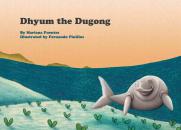 This image has been sourced from online.5012370675782171495.jpg
This image has been sourced from online.5012370675782171495.jpg Dhyum the Dugong Mariani Fuentes , 2012 single work picture book
Dhyum the Dugong Mariani Fuentes , 2012 single work picture bookSpecies: Dugong
Conservation Status: Vulnerable
Abstract: The main character of the book, 'Dhyum' is based on a real dugong that was satellite-tagged in 2010 at Mabuiag Island in Torres Strait. Dhyum was named by students from the local Tagai State College. This book is dedicated to the children of the Torres Strait islands with the hope that they learn more about dugongs and the threats faced by the species, so they understand the importance of working to preserving them.
-
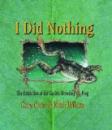 439992535036612806.jpg
439992535036612806.jpg I Did Nothing : The Extinction of the Gastric-Brooding Frog Gary Crew , 2004 single work picture book
I Did Nothing : The Extinction of the Gastric-Brooding Frog Gary Crew , 2004 single work picture bookAbstract: Young Zeek, assistant to the museum's curator of amphibians, learns of the fate of what might have been the last Gastric-Brooding Frog, a unique Australian animal which scientists were keen to learn more from. Horrified as he is by the frog's death, Zeek is not about to give up. He is just one of many young scientists who has decided that he can do something about preserving Earth's endangered environmental heritage.
-
Species: Iguanas, Galapagos Islands
Conservation Status: Vulnerable
Abstract: Follow the land dragon as she journeys from the volcanic mountains, across the cliff edges and through danger and exhaustion to find a lush, safe place and lay her eggs.
-
Species: Dugong
Conservation Status: Vulnerable
Abstract: The tranquil seagrass meadow seems a safe place for Gentle Dugong and his aquatic undersea friends to play until one day a trawler with its scoop net appears.
-
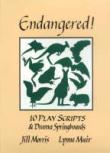 2070923365438886185.jpg
2070923365438886185.jpg Endangered! : Plays About Endangered Australian Animals for Primary Schools Jill Morris , 2000 selected work drama
Endangered! : Plays About Endangered Australian Animals for Primary Schools Jill Morris , 2000 selected work dramaAbstract: Ten plays about endangered animals inspired by previously published books written by Jill Morris.
-
 This image has been sourced from online.1341532917730296125.jpg
This image has been sourced from online.1341532917730296125.jpg Escape to Kalimantan Steve Tolbert , 1998 single work novel
Escape to Kalimantan Steve Tolbert , 1998 single work novelSpecies: Bornean Orangutan
Conservation Status: Endangered
Abstract: Escape to Kalimantan tells the story of fifteen year old Jack, who has been taught by his father, Arnold, to respect life, to feel a strong compassion for it in all its rich and varied forms. But the horror of 28 April 1996 changes all that. Jack's sister is killed in the Port Arthur Massacre, and days later Jack's mother leaves for good. When his father's mental state begins to deteriorate, Jack realises he's got to do something to help his father get on with life again. Wild places and wildlife are Arnold's passionate interests, so close contact with these, Jack believes, will provide his father with his best hope of recovery. He finds out about a place that has the richest animal and plant life in the world. It's called Kalimantan - wild Kalimantan. Like his poster filled room, the perfect place to escape to, Jack thinks.
-
Species: Giant Tortoise, Galapagos Islands
Status: Vulnerable
Abstract: A fictionalised account of Harriet. At about 175 years of age it is thought that Harriet the tortoise who lives in Queensland is the world's oldest living land animal.
-
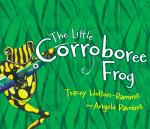 Image courtesy of Magabala BooksCorroboree Frog_large_FX7K.jpg
Image courtesy of Magabala BooksCorroboree Frog_large_FX7K.jpg The Little Corroboree Frog Tracey Holton-Ramirez , 2013 single work picture book
The Little Corroboree Frog Tracey Holton-Ramirez , 2013 single work picture bookSpecies: Corroboree Frog
Conservation Status: Critically endangered
Abstract: Jet the corroboree frog is happily taking care of the tadpole ponds when the water starts to dry up and his family's eggs are threatened. He goes to visit Grandmother Frog to find out why and she tells him all about the summers that are getting hotter every year and the careless humans who are leaving their rubbish around. When a boy and his father arrive to go fishing in the nearby river, Jet seizes the opportunity to show them how humans are threatening the very existence of his species.
See http://www.corroboreefrog.org.au/ and the Amphibian Research Centre for more information.
-
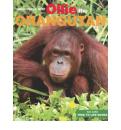 This image has been sourced from online.4151517327880417487.jpg
This image has been sourced from online.4151517327880417487.jpg Ollie The Orangutan Jan Latta , 2011 single work picture book
Ollie The Orangutan Jan Latta , 2011 single work picture bookSpecies: Bornean Orangutan
Status: Endangered
Abstract: A true-to-life story about endangered orangutans. Discover what they eat, where they live and how they survive.
-
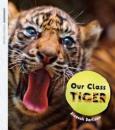 This image has been sourced from online.5120483525287810841.jpg
This image has been sourced from online.5120483525287810841.jpg Our Class Tiger Aleesah Darlison , 2014 single work non-fiction
Our Class Tiger Aleesah Darlison , 2014 single work non-fictionAbstract: Our class has adopted a tiger cub who lives in another country. Find out about our class tiger before he's all grown up. (Back cover)
This non-fiction book includes photography, illustrations and diagrams. It tells the story of a baby tiger who was orphaned after its mother was shot. It also introduces readers to topics such as deforestation and its impact on endangered species.
-
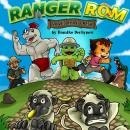 This image has been sourced from online.4357728053518752815.jpg
This image has been sourced from online.4357728053518752815.jpg Ranger Rom : Saves Rhino Reth Romiko Derbynew , 2014 single work picture book
Ranger Rom : Saves Rhino Reth Romiko Derbynew , 2014 single work picture bookSpecies: Black Rhinoceros
Status: Critically Endangered
Abstract: Ranger Rom wakes up to another beautiful day in the African savanna, only to be summoned by Lisha the leopard to help a friend in grave danger. Ranger Rom introduces wildlife and conservation in a fun and engaging adventure story.
-
First line: The last colony
Themes: Australian sea lions, endangered species, Kangaroo Island.
-
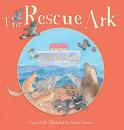 Cover image courtesy of publisher.7282277523429203897.jpg
Cover image courtesy of publisher.7282277523429203897.jpg The Rescue Ark Susan Hall , 2014 single work single work picture book
The Rescue Ark Susan Hall , 2014 single work single work picture bookAbstract: The Rescue Ark is travelling around Australia helping endangered animals! Watch the wombats, parrots, potoroos, quolls and many more make their way onto the Ark.
'This picture book, illustrated with wonderful collages, keys into the increasing awareness about our endangered animals by young children and their parents. Firstly, have fun tracing the Ark's journey on the colourful map of Australia and reading about the animals that will be collected on its way around the coast. Then, help the animals onto the Ark by singing or reading the rhymes. At the end of the book, find out if the Aussie children make the world safe for their animals again. In the back pages, learn more about these endangered animals in an easy-to-read fast facts text with photographs of the real animals. (Publication summary)
The back of the book contains factual information on each of the species included in the book. Each animal is listed on the Environment Protection and Biodiversity Conservation Act list of threatened species.
-
First line: In the parklands
Mentions endangered and extinct animals: Eastern Quoll, Tamar Wallaby, Southern Brown Bandicoot, Bilby, Short-Beaked Echidna, Platypus, Burrowing and Brush-Tailed Bettong.
Quote from poem -
"Foxes, cats, rats, and dogs
Replace the retreating."
-
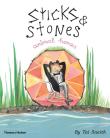 Image courtesy of publisher's website.1754377566176336642.jpg
Image courtesy of publisher's website.1754377566176336642.jpg Sticks and Stones, Animal Homes Tai Snaith , 2014 single work children's fiction
Sticks and Stones, Animal Homes Tai Snaith , 2014 single work children's fictionAbstract: Everyone likes to build cubbies and play house. Find out where 15 animals make their homes in countries around the world. Some weave, some burrow, some build and some just get lucky. Which house would you most like to share? This book focuses on animal habitats around the world. More specifically, species that use interesting building methods or those with symbiotic relationships with other organisms have been chosen.
The back of the book contains factual information on each the species identified, including whether the species is vulnerable or threatened. However, since publication some species have since been upgraded to threatened or endangered. The animals in this book are anthropormophic, and human objects, clothes etc are found in and as part of the animal homes.
-
-
(Display Format : Landscape)
Australian Wildlife Under Threat
Below are some examples of works about Australian animals currently in decline or threatened.
N.B. The image above is from 'The Lost Leadbeater's Possums', found online.
-
Species: Eastern Barred Bandicoot
Status: Endangered
Abstract: A beautifully illustrated story of this marsupial's plight and how it was saved from extinction. The Eastern Barred Bandicoot is one of Australia's most threatened species. When their existence came under extreme threat from habitat loss, predators and human development, Eastern Barred Bandicoots found refuge in the most unlikely of places – a rubbish tip. This captivating true story details the plight these small, nocturnal marsupials faced, and the outstanding efforts that ensured their protection. Written by Rohan Cleave and illustrated by Coral Tulloch, Bouncing Back shows that even on the brink of extinction, there is hope for the survival of our most vulnerable species.
-
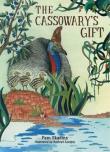 Image courtesy of publisher's website.7415445521396498889.jpg
Image courtesy of publisher's website.7415445521396498889.jpg The Cassowary’s Gift Pam Skadins , 2016 single work picture book
The Cassowary’s Gift Pam Skadins , 2016 single work picture bookSpecies: Southern Cassowary
Status: Vulnerable
Abstract: There’s a buzz in the rainforest after the animals start seeing new signs about the cassowary. But why is the cassowary so important? Join the rainforest animals as they search for the cassowary and hear his special song about his gift to the forest ...
-
Species: Tasmanian Devil
Status: Endangered
Abstract: A young tasmanian devil becomes lost in the bush, and then reunited with his family after being rescued by a ranger.
While Daniel tries to find his family and survive on his own, he encounters many other Australian animals along the way.
The back of this book contains factual information on tasmanian devils, including the devil facial tumour disease.
-
Species: Tasmanian Devil
Status: Endangered
Abstract: The Irwin's fly down to Cradle Mountain in Tasmania to take part in a fundraising concert for the endangered Tasmanian devil. After a terrific start, things take a dramatic turn for the worse when self-obsessed celebrity, Adam Starr, causes the real stars of the show to escape.
As with all novels part of the Bindi Wildlife Adventures series, the book contains an 'Animal Fact File', detailing scientific facts about the species featured in the book.
-
 This image has been sourced from Booktopia5045778710525789286.jpg
This image has been sourced from Booktopia5045778710525789286.jpg The Lost Leadbeater's Possums Tim Faulkner , 2016 single work picture book
The Lost Leadbeater's Possums Tim Faulkner , 2016 single work picture bookSpecies: Leadbeater's Possum
Status: Critically Endangered
Abstract: The Leadbeater's possums were thought to be gone; logging, destruction and fire had forced them to flee! But if we take care of the trees and their habitat, they might just come back...look, what's up in that tree?
The Lost Leadbeater's Possums follows scientists as they attempt to locate the possums in their natural habitat, and their efforts to save the species by rehabilitating their home.
-
Species: Bilby
Conservation Status: Vulnerable
Abstract: The story of a bilby who leads a peaceful life, until the feral animals take over. A sanctuary is finally made for the endangered species, and they begin to rebuild their lives.
-
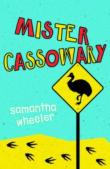 This image has been sourced from online.128180492642933415.jpg
This image has been sourced from online.128180492642933415.jpg Mister Cassowary Samantha Wheeler , 2015 single work children's fiction
Mister Cassowary Samantha Wheeler , 2015 single work children's fictionSpecies: Southern Cassowary
Status: Vulnerable
Abstract: When Flynn and Dad arrive at Grandad Barney's banana farm, it's clear that Flynn has a lot of investigating to do. Everything in the place is a mystery, especially his grandad who died almost a year ago, and the strange dinosaur-like birds called cassowaries that make his dad so scared. Why won't Dad tell Flynn what happened? After Flynn meets local girl Abby and discovers two orphaned baby cassowaries, they mystery deepens.
This story introduces readers to that dangers of feeding and caring for wildlife outside of their natural habitats. It includes information about the endangered cassowary birds, and, conservation and rehabilitation efforts to save the birds. The back of the book contains factual information about the species, and useful websites about conservation.
-
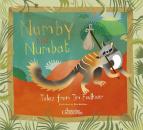 This image has been sourced from Booktopia8276324915441059913.jpg
This image has been sourced from Booktopia8276324915441059913.jpg Numby the Numbat Tim Faulkner , 2016 single work picture book
Numby the Numbat Tim Faulkner , 2016 single work picture bookSpecies: Numbat
Status: Endangered
Abstract: For every young numbat, a day does come when it’s time to leave home, their dad and their mum. When Numby heads out to find his own place, it’s a grand old adventure, a wild numbat chase!. An unforgettably book set in verse, this beautifully illustrated text tells the story of the Western Australian state faunal emblem - the numbat.
When the natural habitat of a numbat is threatened, he heads off on a journey to a new home. The texts shows various threats to the species, such as foxes and urban development, that have resulted in the species becoming endangered. A wildlife ranger rescues the numbat and relocates it.
-
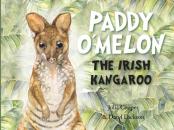 2826036274195943994.jpg
2826036274195943994.jpg Paddy O'Melon : The Irish Kangaroo Julia Cooper , 2017 single work picture book
Paddy O'Melon : The Irish Kangaroo Julia Cooper , 2017 single work picture bookSpecies: Red-legged Pademelon
Status: Least concern
Abstract: Paddy O'Melon is the endearing story of a young rainforest kangaroo. Separated from his mother as a young joey, Paddy is found and raised by an Irish family who live in the rainforest and often help orphaned or injured animals. But while Paddy loves his new human family, he's curious to find out what he really is. So, he sets out on a journey into the rainforest where he meets a range of other interesting animals, from musky rat-kangaroos to green tree frogs, from ringtail possums to flying-foxes. But all he really wants is to be reunited with his mother and his own kind. Perhaps the cassowary can tell this little red-legged pademelon who he really is and take him safely home?
This picture book features a large number of animals essential to the biodiversity of Far North Queensland. The Authors Notes state that some species (e.g. Herbert River ringtail possum) can only be found in this area. Many of the animals encountered by the pademelon are vulnerable or endangered, including the southern cassowary. The story highlights the vulnerability of the rainforest, even the impact that a small act of unleashing pet dogs can have on the wildlife. Wildlife carers play a large role in this story.
-
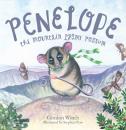 This image has been sourced from online.5090167668101616929.png
This image has been sourced from online.5090167668101616929.png Penelope the Mountain Pygmy Possum Gordon Winch , 2016 single work picture book
Penelope the Mountain Pygmy Possum Gordon Winch , 2016 single work picture bookSpecies: Mountain Pygmy Possum
Status: Critically Endangered
Abstract: Much of Penelope's story is true. Mountain Pygmy Possums do hibernate, the male does go down the mountain to warmer regions in the winter, and a 'tunnel of love' has been built to help them return safely to their mates.
The home of anthropomorphic mountain pygmy possums is threatened by urban road expansion and construction. Penelope, a mountain pygmy possum, is rescued by a wildlife ranger that endeavours to have a tunnel built beneath the road to allow the pygmy possums to continue their feeding and mating habits.
The mountain pygmy possum is a threatened species.
-
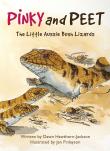 Image courtesy of publisher's website.3377498871481871642.jpg
Image courtesy of publisher's website.3377498871481871642.jpg Pinky and Peet : The Little Aussie Bush Lizards Dawn Hawthorn-Jackson , 2015 single work picture book
Pinky and Peet : The Little Aussie Bush Lizards Dawn Hawthorn-Jackson , 2015 single work picture bookSpecies: Pygmy Bluetongue Lizard
Status: Endangered
Abstract: Pinky and Peet live in an Aussie bush town. Come and join them on their adventure...
This narrative follows Pinky and Peet, who ask their mother many questions about themselves. The reader will learn much about the species through this story.
"Pygmy Bluetongue Lizards were rediscovered near Burra, South Australia, Australia in 1992. Prior to this they had not been seen since the 1950's. Thanks to research and conservation efforts, these little lizards can be found on some pastoral land and grasslands in the Aussie bush. In 2014, the Pygmy Bluetongue Conservation Association was established. For more information about this organisation and the Pygmy Bluetongue Lizard please visit: http://pygmybluetonguelizard.visitburra.com." (Source: back cover)
-
Species: Northern Quoll
Status: Endangered
Abstract: A quoll is visited by the spirit of the thylacine, who helps her and her babies to find a new home after cane toads move into her habitat.
The back of this book contains factual information on quolls, as well as a description of the Northern Territory Island Ark program designed to secure native fauna susceptible to cane toads.
-
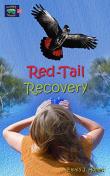 This image has been sourced from online.1175378676999189874.jpg
This image has been sourced from online.1175378676999189874.jpg Red-tail Recovery Emma J. Homes , 2016 single work children's fiction
Red-tail Recovery Emma J. Homes , 2016 single work children's fictionSpecies: Red-tail Black Cockatoo (South Eastern)
Status: Endangered
Abstract: Ruthie’s wildlife scientist parents are taking on a new challenge – saving the endangered red-tailed black-cockatoo. For Ruthie this means a lot of exciting firsts: living in a house, and not a bus, starting at a ‘real’ school, and the chance to make some friends. As always, Ruthie will be helping her parents with their work, but will it be enough to make a difference for these rare and beautiful birds? And what will Ruthie and her family find themselves up against this time?
-
Species: Rufous Hare Wallaby (Mala)
Status: Vulnerable
Abstract: In the central desert of Australia, lives a small nocturnal marsupial group called marla, that inhabits the Spinifex and hummock grasslands. Their numbers have declined since 1990s due to habitat destruction and predation. Warla the shy marla, tells how the Warlpiri people rescued her and now she lives in a safe environment.
-
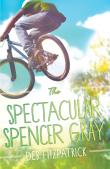 Image courtesy of publisher's website.8901659506964171041.jpg
Image courtesy of publisher's website.8901659506964171041.jpg The Spectacular Spencer Gray Deb Fitzpatrick , 2017 single work children's fiction
The Spectacular Spencer Gray Deb Fitzpatrick , 2017 single work children's fictionSpecies: Gilbert's Potoroo
Status: Critically Endangered
Abstract: Spencer Gray is just an ordinary kid, but he manages to get into some pretty extraordinary situations. When Spencer stumbles on a sinister operation in the bush, his life goes into overdrive – midnight rescue missions, super-endangered animals, hair-raising adventures. To survive, Spencer will need to pull off something spectacular.
Teaching notes available here.
-
 1001459958320264639.jpg
1001459958320264639.jpg The Wombat Who Talked to the Stars : The Journal of a Northern Hairy-nosed Wombat Jill Morris , 1997 single work non-fiction
The Wombat Who Talked to the Stars : The Journal of a Northern Hairy-nosed Wombat Jill Morris , 1997 single work non-fictionSpecies: Northern Hairy-Nosed Wombat
Conservation status: critically endangered
Abstract: The northern hairy-nosed wombat, a critically endangered species, is found in one colony in north-west Queensland, Australia, consisting of about sixty-five individuals. Jill Morris tells the history of the species from the point of view of a 25 year old male wombat, with sensitive, colourful illustrations by Sharon Dye. Members of the northern hairy-nosed wombat recovery team have assisted in the development of this important book, produced at a crucial time for the survival of these precious animals.
-
-
(Display Format : Landscape)
Daily Life of Australian Animals
Listed here are books about birds, mammals, including marine, reptiles and so on. While most are fiction, and narrative nonfictions, primarily they also contain factual information either throughout the text, or in endpapers, differentiating them from other 'animal' books. Each of these books in some way either directly or indirectly highlights biodiversity, and the important role each animal plays in its environment.
Many of these books have won awards.
See The Artful Interpretation of Science for using such texts in the primary classroom.
N.B. Image above from 'Emu', found online.
-
Animal Antics is a series Steve Parish Publishing. Each book in this series is a narrative about an anthropomorphised Australian animal in its natural habitat. Factual information is presented at the back of the book, and photographs of the animals (by Steve Parish) accompany each page.
-
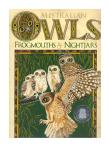 4160901280503010614.jpg
4160901280503010614.jpg Australian Owls, Frogmouths and Nightjars Jill Morris , 1993 single work non-fiction
Australian Owls, Frogmouths and Nightjars Jill Morris , 1993 single work non-fictionAbstract: Australia's night birds - owls, frogmouths and nightjars - are depicted in magnificent gouache painting, accompanied by whimsical verse and informative prose.
This information book contains factual information about different species of nocturnal birds, accompanied by poems. The illustrations depict the birds in their respective habitats, as well as nearby flora and fauna. It contains maps, a glossary, and a comparison of bird sizes.
This book won the Whitly award for Best Children's Illustrated Book in 1994.
-
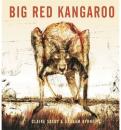 Image courtesy of Walker Books5555801283633225660.jpg
Image courtesy of Walker Books5555801283633225660.jpg
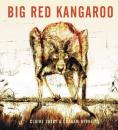 Cover image courtesy of publisher.3699877597352135959.jpeg
Cover image courtesy of publisher.3699877597352135959.jpeg Big Red Kangaroo Claire Saxby , 2013 single work picture book
Big Red Kangaroo Claire Saxby , 2013 single work picture bookAbstract: Far inland, the sun floats on the waves of a bake-earth day. Big Red and his mob of kangaroos wait for night-time when they can search for food. Young male kangaroos wait too - ready to challenge Red and take his place as leader.
This book won the Whitley Award in 2014.
-
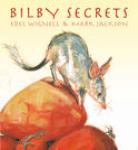 Courtesy of Walker Books Australia.1297289957728_FU-g.jpg
Courtesy of Walker Books Australia.1297289957728_FU-g.jpg
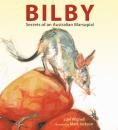 This image has been sourced from online.3077056416253512490.jpg
This image has been sourced from online.3077056416253512490.jpg Bilby Secrets Edel Wignell , 2011 single work picture book
Bilby Secrets Edel Wignell , 2011 single work picture bookAbstract: A narrative non-fiction book which follows the life of a bilby, an Australian marsupial. The story depicts a young bilby’s birth, habitat, behaviour and diet. When Baby Bilby is born, he’s as long as your little toe. He crawls into his mother’s warm pouch, where he feeds and grows. Baby Bilby is soon ready to leave the safety of the burrow. He follows his mother closely, sniffs the night air, and hops into the moonlight for his first desert adventure.
-
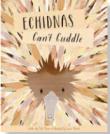 Image courtesy of publisher's website.94877887106430756.jpg
Image courtesy of publisher's website.94877887106430756.jpg Echidnas Can't Cuddle Nieta Manser , 2016 single work picture book
Echidnas Can't Cuddle Nieta Manser , 2016 single work picture bookAbstract: Erik the echidna is feeling sad. His quills make it hard to cuddle his family and friends — nobody likes a spiky hug! But when a few things go astray, Erik finds that his prickly exterior can come in very handy...
This picture book shows interactions with other animals and other the echidna's spikes can work to it's advantage.
-
 Image courtesy of publisher's website.3860626067553258870.jpg
Image courtesy of publisher's website.3860626067553258870.jpg
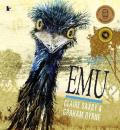 This image has been sourced from online.4500477778569119437.jpg
This image has been sourced from online.4500477778569119437.jpg Emu Claire Saxby , 2014 single work picture book
Emu Claire Saxby , 2014 single work picture bookAbstract: In the open forest, Emu watches over his nest. Gathering the granite-green eggs under soft feathers, Emu will care for them and protect the fluffy chicks once they hatch. The survival of this unusual family depends upon him.
-
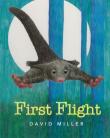 This image has been sourced from online.1509418443264257135.jpg
This image has been sourced from online.1509418443264257135.jpg
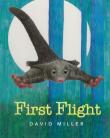 This image has been sourced from online.2242814108225549176.jpg
This image has been sourced from online.2242814108225549176.jpg First Flight David Miller , 2014 single work picture book
First Flight David Miller , 2014 single work picture bookAbstract: When laughing kookaburras call Joey the little yellow-bellied glider out from his nest one morning, it is the start of an unforgettable adventure.
This picture book tells the story of the daily life of a joey glider, and his interactions with the other forest animals around him.
-
Abstract: Silus, the platypus frog, lives in the 'green' air of a small remnant rainforest in south-eastern Queensland, Australia. When heavy rain swells the creek where Silus lives, he is swept out of the forest and into the dangerous world of the 'yellow' air.
This species of frog has not been seen since 1981.
-
Abstract: After a hard day flying the falcons arrive in a large city. They make their nests on a ledge in a multi storey building and the males set off to hunt prey.
-
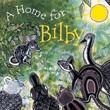 Image courtesy of Publisher website1976290437046062144.jpg
Image courtesy of Publisher website1976290437046062144.jpg A Home for Bilby Joanne Crawford , 2004 single work picture book
A Home for Bilby Joanne Crawford , 2004 single work picture bookAbstract: An engaging picture book that takes children on a journey through the Australian outback and the habitats of the animals that live there. Join Kangaroo, Emu, Platypus, Wombat and Koala as they help find a home for their new friend, Bilby.
-
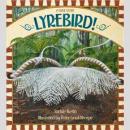 Cover image courtesy of publisher.3945005537256843740.jpg
Cover image courtesy of publisher.3945005537256843740.jpg Lyrebird! A True Story Jackie Kerin , 2012 single work picture book
Lyrebird! A True Story Jackie Kerin , 2012 single work picture bookAbstract: When Edith met a cheeky young lyrebird on her garden path, she could not guess that he would one day be known as 'A Miracle of the Dandenongs'. Soon, James the lyrebird was singing and dancing for Edith, mimicking the birdsongs and other sounds that echoed through the bush. Word of their friendship spread and people travelled from near and far to film and record James. But with people came change ... This true story, retold by Jackie Kerin and beautifully illustrated by Peter Gouldthorpe, celebrates a remarkable friendship between a gardener and one of Australia's most extraordinary birds.
-
Abstract: Out in the bush, in a stream in the sun, lived a mother platypus and platypup one. "Swim!" said the mother, "I swim!" said the one, so they swam in the stream, sparkling in the setting sun. Go walkabout in the bush and see who else you can find as you count from one to ten.
-
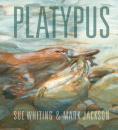 This image has been sourced from online.7776305750212311285.jpg
This image has been sourced from online.7776305750212311285.jpg
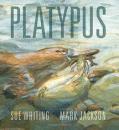 This image has been sourced from online.2907381386503572661.jpg
This image has been sourced from online.2907381386503572661.jpg Platypus Sue Whiting , 2015 single work picture book
Platypus Sue Whiting , 2015 single work picture bookAbstract: Platypus leaves his burrow in the riverbank and dives into the cool green pool. It is dusk and he is hungry. Platypus is always busy, always moving, looking for his next meal. Follow platypus as he plays, swims, dives and scurries around his riverbank home.
-
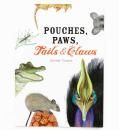 650866677111403540.jpg
650866677111403540.jpg Pouches, Paws, Tails & Claws Jennifer Truswell , 2016 single work picture book
Pouches, Paws, Tails & Claws Jennifer Truswell , 2016 single work picture bookAbstract: A fun and educational picture book dedicated to Australia's unique and diverse wildlife. Complete with water colour illustrations, rhyming verses and interesting facts on each page.
A picture book for early readers with factual information told in rhyme. Many of the animals included are endangered species.
-
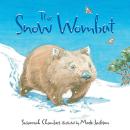 Cover image courtesy of publisher.5856682250964728707.jpg
Cover image courtesy of publisher.5856682250964728707.jpg
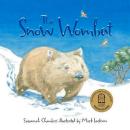 This image has been sourced from Booktopia700416785086913772.jpg
This image has been sourced from Booktopia700416785086913772.jpg The Snow Wombat Susannah Chambers , 2016 single work picture book
The Snow Wombat Susannah Chambers , 2016 single work picture bookAbstract: 'An adventurous young wombat finds his way around a winter landscape before snuggling back into his own cosy burrow.
'Snow on the stockman's hut
'Snow on the crows
'Snow on the woollybutt
'Snow on my NOSE!
'It's a big journey through the snow for a little wombat, meeting animals, birds and people along the way...but there's no place like home!
This picture book follows a wombat on a walk through his snowy habitat. Many of the spreads show evidence of humans in the natural habitat of the wombat, suggesting that humans are simply a part of native animals' daily life. It also illustrates other animals, native and otherwise, who live in the same area; and also the wombat's burrow.
-
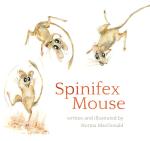 Image courtesy of Magabala booksSpinifex_mouse_cover_large_FWvM.jpg
Image courtesy of Magabala booksSpinifex_mouse_cover_large_FWvM.jpg Spinifex Mouse Norma MacDonald , 2013 single work picture book
Spinifex Mouse Norma MacDonald , 2013 single work picture bookAbstract: Spinifex Mouse is the heart-warming tale of Cheeky, a spinifexhopping mouse, who lives in the Pilbara region of Western Australia. Cheeky is an adventurous little mouse that loves to leap high into the air and practice acrobatic tricks. Every morning, when his family have returned to their burrow to sleep after a night's foraging, Cheeky sneaks out again to look for more food and practice his flips. Each day, he ventures a little further from the burrow. One morning, when Cheeky is far from home, he shows off his clever tricks in front of a hungry snake and becomes swept up in a heart-stopping and very risky adventure.
See Magabala Books website for detailed teaching notes.
-
 Image courtesy of publisher's website.53998846028399767.jpg
Image courtesy of publisher's website.53998846028399767.jpg A Tale of Two Honey Possums Felicity Bradshaw , 2008 single work picture book
A Tale of Two Honey Possums Felicity Bradshaw , 2008 single work picture bookAbstract: This children's book about honey possums, is based on scientific evidence resulting from 20 years' zoological research into these tiny marsupials in their natural surroundings in the south-west corner of Western Australia. Both animals and flowers are reproduced with such detailed accuracy, that they will pass the scrutiny from experienced botanists and zoologists and the book will be of use in the schoolroom for biology teachers to children of all ages.
-
-
(Display Format : Landscape)
Case Study: The Importance of Bees
Bees and honey are common topics in children's literature, but there does appear to be an increase in recent times due to the effect of climate change and global warming on bee species. Below are some titles that look at bees and their contribution and significance to the environment, including several that discuss their actual decline.
N.B. Image above is a sample from 'Flight of the Honey Bee', found online.
-
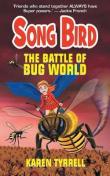 This image has been sourced from Booktopia1258116060444554907.jpg
This image has been sourced from Booktopia1258116060444554907.jpg The Battle of Bug World Karen Tyrrell , 2017 single work children's fiction
The Battle of Bug World Karen Tyrrell , 2017 single work children's fictionAbstract: A superstorm destroys Rosella Ava Bird's flower garden. All the bees are disappearing. A giant sinkhole cracks open beneath Rosie's school bus, and mysterious voices rise up from the depths. A giant tornado blasts the house of Frank, Rosie's sinister next-door neighbour, threatening Rosie's family. And Rosie's sister, Raven, has gone missing. Should Rosie lead a mission into Bug World to rescue Raven? Or stay home and save her family?
-
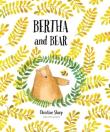 Cover image courtesy of publisher.7426885681077987445.jpg
Cover image courtesy of publisher.7426885681077987445.jpg
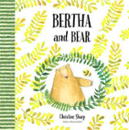 This image has been sourced from online.5033641977622255793.jpg
This image has been sourced from online.5033641977622255793.jpg Bertha and Bear Christine Sharp , 2017 single work picture book
Bertha and Bear Christine Sharp , 2017 single work picture bookAbstract: There's a storm brewing and the hive must find a new home. With clouds filling the sky and thunder growling, Bertha bravely rises to the occasion a until she meets BEAR, that is! Bertha and Bear is a book buzzing with friendship, finding your place and the courage of one brave little bee.
There are many implicit themes in this picture book: the storm (an extreme one) could be read as climate change and the impeding doom that is species decline; it is clear in the story that homes for bees are scarce; and bees are shown to benefit other animals (i.e. bears for example).
-
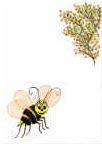 Image courtesy of publisher's website.493813469238541694.jpg
Image courtesy of publisher's website.493813469238541694.jpg Binnie Bee Louise Farrell , 1999 single work picture book
Binnie Bee Louise Farrell , 1999 single work picture bookAbstract: Binnie is the last bee to be born in the hive, and finds a wildflower garden saving the hive from starvation.
-
 Courtesy of Allen & UnwinHirsh_Darius_Crystal_FV$u.jpg
Courtesy of Allen & UnwinHirsh_Darius_Crystal_FV$u.jpg Darius Bell and the Crystal Bees Odo Hirsch , 2011 single work children's fiction
Darius Bell and the Crystal Bees Odo Hirsch , 2011 single work children's fictionAbstract: The bees on the Bell estate are dying. There'll be no more delicious honey, and without the bees to pollinate flowers, no more fruit and vegetables. No more of Mrs Simpson's glorious pies and cakes! Worse still, Mr Fisher the gardener will have to leave the estate, along with his family. Darius Bell is determined that something must be done, even if the dastardly Mayor is against him. Then Darius has a great idea. But he will need help from his friends and family to make it work. And he must drive a hard bargain with Mrs Lightman, the school principal and a dragon if ever there was one... A sequel to the award-winning Darius Bell and the Glitter Pool, this is a very funny story of problem-solving, teamwork and pollination.
There is debate in the book about whether the loss of bees is a "disaster" and Darius and his friends learn that in fact it is, as bees (and the loss of honey) impact people and the natural environment significantly and on many levels. This book is heavy with descriptions about bees, their habits and habitats as well as numerous types of honey. While the cause of the bees' deaths is not revealed, their importance is clearly represented in the narrative. The children at Darius' school learn to pollinate the fruit and vegetables in place of the bees, and in so doing, learn their significance.
-
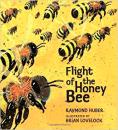 1769557952722300856.jpg
1769557952722300856.jpg
 Image courtesy of publisher's website.6842259377493069127.jpg
Image courtesy of publisher's website.6842259377493069127.jpg Flight of the Honey Bee Raymond Huber , 2013 single work picture book
Flight of the Honey Bee Raymond Huber , 2013 single work picture bookAbstract: The cold is coming and Scout is on a daring flight in search of the last flowers of autumn. Scout's mission is very dangerous, but it is also vital, because the flowers provide the precious nectar the hive needs to make honey. Can the hive make enough honey to survive the long winter months?
-
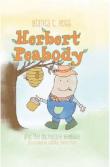 This image has been sourced from online.675179837151269062.png
This image has been sourced from online.675179837151269062.png Herbert Peabody and the Incredible Beehive Bianca C. Ross , 2015 single work children's fiction
Herbert Peabody and the Incredible Beehive Bianca C. Ross , 2015 single work children's fictionAbstract: Herbert Peabody is a farmer who grows fruit and vegetables in his big, big vegetable patch at Mulberry Tree Farm. When he discovers that his new neighbour, Bee, is having trouble finding enough pollen to supply her family's hive, Herbie decides to lend a hand to find more flowers. But there's another concern: The Voice That Belongs to Nobody has taken up residence in the once-grand mansion of Huffelton, scaring away anyone who ventures inside the neglected, lonely grounds. Will Herbie be able to find more flowers in tome for Bee's hive? And can he solve the mystery behind the voice in Huffelton House?
-
 This image has been sourced from online.2596128834777031480.jpg
This image has been sourced from online.2596128834777031480.jpg The Honey Bees Caleb Lewis , 2017 single work drama
The Honey Bees Caleb Lewis , 2017 single work dramaAbstract: “He’d only have to whistle and they’d start swirling around him. Like the centre of a universe. And all the bees hanging like stars. This bright, glittering sphere…” As the world’s honeybees disappear, a family-owned apiary struggles to keep up with overseas demand. Driven by matriarch Joan’s iron will, the business continues to grow. And then Melissa arrives out of the blue. The Honey Bees is a tale of Family and Empire; Action and Consequences; and what happens when the bee finally stings.
A play for young adults.
-
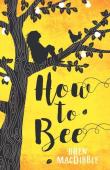 Cover image courtesy of publisher.4169252108367570873.jpg
Cover image courtesy of publisher.4169252108367570873.jpg
 Image courtesy of publisher's website.6528807750863577321.jpg
Image courtesy of publisher's website.6528807750863577321.jpg
 This image has been sourced from online.5534710501454453204.jpg
This image has been sourced from online.5534710501454453204.jpg How to Bee Bren MacDibble , 2017 single work children's fiction
How to Bee Bren MacDibble , 2017 single work children's fictionAbstract: 'Sometimes bees get too big to be up in the branches, sometimes they fall and break their bones. This week both happened and Foreman said, 'Tomorrow we'll find two new bees. Peony lives with her sister and grandfather on a fruit farm outside the city. In a world where real bees are extinct, the quickest, bravest kids climb the fruit trees and pollinate the flowers by hand. All Peony really wants is to be a bee. Life on the farm is a scrabble, but there is enough to eat and a place to sleep, and there is love. Then Peony's mother arrives to take her away from everything she has ever known, and all Peony's grit and quick thinking might not be enough to keep her safe.
This children's book tells the story of Peony who wants to become a 'bee'. How to Bee is set in the future after global warming has created food shortages and killed off most of the bees. It is now the job of 'farm kids' to act as 'bees' and pollinate fruit and flowers to produce food for the 'Urbs' (city dwellers). Peony's farm is sustainable and idealised. Nostalgia for simpler, greener times is evident in the names of the farm kids, such as Peony, Magnolia, Applejoy, and Honey, as well complimentary slang like the term 'supercherries'. While the story revolves around Peony being taken by her mother to serve a family in the city, she does return to the farm and the novel ends with scientists having been able to successfully breed bees and reintroduce them to the farm.
-
 This image has been sourced from online.7450109625869987346.jpg
This image has been sourced from online.7450109625869987346.jpg Quickhoney Garry Hurle , 1979 single work novel
Quickhoney Garry Hurle , 1979 single work novelAbstract: James and his sister Anne combine forces with an intelligent swarm of bees to outwit property developers who intend to destroy a forest in southeastern Australia, only to be confronted by a sinister old hermit whose mysterious power causes devastating results.
Quickhoney features bees who communicate with children saying "Giant machines will kill forest... Madness of mankind".
-
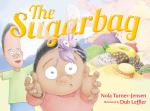 Courtesy of Magabala BooksTurner-JensenSugarbagCover_FWMS.jpg
Courtesy of Magabala BooksTurner-JensenSugarbagCover_FWMS.jpg The Sugarbag Nola Turner-Jensen , 2012 single work picture book
The Sugarbag Nola Turner-Jensen , 2012 single work picture bookAbstract: The Sugarbag is the adventure story of Jimmy and Max, two young brothers, who are on their way to visit their grandfather. Walking through the bush, they encounter an Australian native stingless bee buzzing around their heads. This gives Jimmy the opportunity to teach little Max all he has learned from his grandfather about hunting for 'sugarbag'. Sugarbag is the European word for the honey produced by the stingless bee. The boys go racing through the bush in pursuit of the bee hoping it will lead them to its hive. This is Max's first encounter with hunting for sugarbag and he doesn't really understand what they are searching for, preferring to imagine some sort of bush treasure trove filled with sweets. Sugarbag is a favourite treat for Aboriginal people. We call it ngarruu. When Grandfather was a little boy, he went hunting for ngarruu with his father,' Jimmy explained proudly. Max imagined bags of sweets piled up high. 'Mmmm, sugarbag sounds yummy,' he rubbing his belly.
-
-
(Display Format : Landscape)
Case Study: 'Save the Reef!'
'Save the Reef' is a recurring theme in books set in Australia's oceans, particularly the Great Barrier Reef and the Coral Sea.
The Great Barrier Reef's biggest threats are global warming, overfishing and marine pollution (WWF [2017]), and many marine species that use the reef are endangered. It is most often these animals, and the loss of biodiversity that is featured in stories with a 'save the reef' theme.
In addition, a 'save the reef' message is often part of the Author's note, or the endpapers of a picture book.
N.B. Image above from 'Coral Sea Dreaming', sample found online.
-
Abstract: When daylight fades and the night shift clocks on, an underwater symphony begins. Polyps start popping to a funky sea groove, sea slugs shimmy and alien angels fly into view. The reef at night is teaming with energy and wildlife, all working together to create an underwater masterpiece.
According to the author, this book was inspired by a film documentary of the same name. It contains factual information about the reef, human impact and devastation of the reef, as well as information about proceeds and donations to Ocean Ark Alliance. It also contains a brief section titled "Saving the Reef".
-
 This image has been sourced from online.7872608724479704001.jpg
This image has been sourced from online.7872608724479704001.jpg
 This image has been sourced from online.8449513485160376126.jpg
This image has been sourced from online.8449513485160376126.jpg The Coral Battleground Judith Wright , 1977 single work prose
The Coral Battleground Judith Wright , 1977 single work proseAbstract: The Great Barrier Reef lies off the coast of Queensland: 2000 kilometres of spectacular coral reefs, sand cays and islands, Australia’s most precious marine possession. Teeming with life, it covers 350,000 square kilometres.
'In the late 1960s the Reef was threatened with limestone mining and oil drilling. A small group of dedicated conservationists in Queensland – John Büsst, Judith Wright, Len Webb and others – battled to save the Ellison Reef from coral-limestone mining and the Swain Reefs from oil exploration. The group later swelled to encompass scientists, trade unionists and politicians throughout Australia, and led in 1976 to the establishment of a guardian body: the Great Barrier Reef Marine Park Authority.
'That it still survives is a legacy of activists, artists, poets, ecologists and students. In 1967 they were branded as ‘cranks’; now they should be recognised as ‘visionaries’.
For older readers.
-
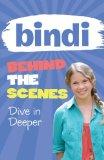 8986481345560815710.jpg
8986481345560815710.jpg Dive in Deeper Bindi Irwin , Meredith Costain , 2012 single work children's fiction
Dive in Deeper Bindi Irwin , Meredith Costain , 2012 single work children's fictionAbstract: The Irwin clan are taking time out to holiday with friends on Lady Elliot Island just off the Queensland coast. As a regular guest of the island, Bindi can't wait to show her friends around! And with the turtle nesting season in full swing, there is plenty to do and see. But when Bindi joins her friends on their first scuba dive, she spots a young turtle in trouble. Will they be able to save it in time?
Bindi also learns a lot about sustainability on an island which focuses on reducing its carbon footprint through efficient energy use and waste management.
-
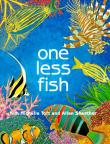 1308623552609774290.jpg
1308623552609774290.jpg One Less Fish Kim Michelle Toft , Allan Sheather , 1997 single work information book
One Less Fish Kim Michelle Toft , Allan Sheather , 1997 single work information bookAbstract: Counting down from twelve to zero, the reader learns about some of the fish found on the Great Barrier Reef and the threats to their continued existence.
-
Abstract: A young Australian girl dives into the sea and joins the Waterworld. With her friends in the Mermaid Commune she fights to rescue the creatures of the deep from the inhumanity of humans.
-
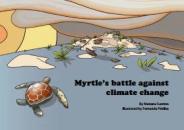 5055737670496365308.jpg
5055737670496365308.jpg Myrtle's Battle Against Climate Change Mariani Fuentes , 2010 single work picture book
Myrtle's Battle Against Climate Change Mariani Fuentes , 2010 single work picture bookAbstract: This book is based on findings from the PhD research conducted by Mariana Fuentes on the impacts of climate change on the northern Great Barrier Reef green sea turtle population. The main character of the book, "Myrtle", is based on a real turtle that was satellite-tagged in 2008 at Mer Island, Torres Strait. Myrtle was named by students from the local Tagai State College...
-
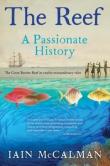 Image courtesy of publisher's website.2756747573973160209.jpg
Image courtesy of publisher's website.2756747573973160209.jpg The Reef : A Passionate History Iain McCalman , 2013 single work non-fiction
The Reef : A Passionate History Iain McCalman , 2013 single work non-fictionAbstract: The Great Barrier Reef, argues Iain McCalman, has been created by human minds as well as coral polyps, by imaginations as well as natural processes. In this landmark book he charts our shifting perceptions of it, from the terrifying labyrinth that almost sunk Cook's Endeavour to a fragile global treasure.
For older readers.
-
 This image has been sourced from online.2358849442225683205.jpg
This image has been sourced from online.2358849442225683205.jpg Tilly's Reef Adventure Rhonda N. Garward , 2017 single work picture book
Tilly's Reef Adventure Rhonda N. Garward , 2017 single work picture bookAbstract: Tilly’s Reef Adventure is a delightful lift-the-flap book about a baby Green Turtle who, against the odds, makes it into the ocean and begins her journey in the seas of the Great Barrier Reef, meeting friends and foe along the way. After surviving some adventures on the reef, she finds herself caught in a plastic bag that she has mistaken for a jellyfish. She is washed up on a beach where she is saved just in time by children who are cleaning up rubbish along the shore. At the back of the book, there is extra information about the reef, including threats to the reef and how you can help keep it, as well as other parts of our environment, healthy and free of rubbish.
This book contains factual information about the Great Barrier Reef, conservation and threats to its safety.
-
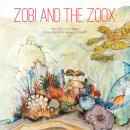 Image courtesy of publisher's website.4658674595327726841.jpg
Image courtesy of publisher's website.4658674595327726841.jpg Zobi and the Zoox Ailsa Wild , 2014 single work picture book
Zobi and the Zoox Ailsa Wild , 2014 single work picture bookAbstract: With her home under threat from a warming ocean, Zobi, a brave rhizobia bacterium, teams up with a family of slow but steady Zoox (zooxanthellae). The coral becomes gravely ill and bacteria around them begin to starve. Can Zobi and the Zoox work together to save the day?
This book is about a symbiotic relationship. It tells the story of the microscopic friends living in a tiny coral polyp.
-
-
(Display Format : Landscape)
Case Study: The Thylacine
The extinction of the thylacine, or Tasmanian tiger, has been lamented in both adult and children's literature for decades. The thylacine can represent loss, and is sometimes used a moral tale for what happens when humans neglect wildlife.
A search for 'thylacines' in AustLit shows many works about the animal, primarily poetry (see Poetry section for more information). Click here for a keyword search on 'thylacines' for children and young adults. See below for some examples.
N.B. The last captive thylacine died in 1936. The species was declared extinct in 1986. The National Museum of Australia cites excessive hunting, habitat destruction, and introduced diseases due to European settlement as causes of its rapid extinction.
N.B. Image from Wikimedia Commons, author unknown, c1920.
-
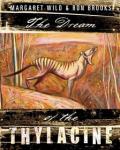 Courtesy of Allen & Unwin.Thylacine_MargaretWild_FTVr.jpg
Courtesy of Allen & Unwin.Thylacine_MargaretWild_FTVr.jpg The Dream of the Thylacine Margaret Wild , 2011 single work picture book
The Dream of the Thylacine Margaret Wild , 2011 single work picture bookAbstract: The Dream of the Thylacine is a lament for a lost species, and a celebration of the Australian landscape. It interposes arresting text and images of the last known thylacine in a concrete cage with sweeping colour paintings of the animal in its natural environment.
The Dream of the Thylacine is a complex text that draws attention to human responsibility to the environment. It alternates between the thylacine's perspective in captivity and it's dreams of its natural habitat.
-
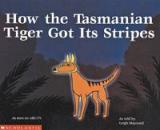 8553783729459978991.jpg
8553783729459978991.jpg How the Tasmanian Tiger Got Its Stripes Leigh Maynard , 2004 single work picture book
How the Tasmanian Tiger Got Its Stripes Leigh Maynard , 2004 single work picture bookAbstract: One day Palana, the son of the great god Moinee, is out hunting. He begins to track a big kangaroo called Tarna. Tarna hides behind a tree and attacks Palana when he comes close. Only a young pup hears Palana's cries for help and runs to the rescue.
This is an Aboriginal Dreamtime story. See also Kannenner The Brave for another version of the story, which comes from the Nuenonne nation of Bruny Island off the Southeast Coast of Tasmania.
-
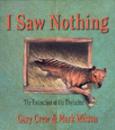 6787272587438659341.jpg
6787272587438659341.jpg
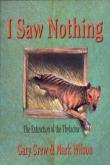 This image has been sourced from online.6001432433273380232.jpg
This image has been sourced from online.6001432433273380232.jpg I Saw Nothing : The Extinction of the Thylacine Gary Crew , 2003 single work picture book
I Saw Nothing : The Extinction of the Thylacine Gary Crew , 2003 single work picture bookAbstract: Rosie tells the story of the capture and death of the last 'tiger-wolf', Tasmania's doomed thylacine, tragically declared a protected species after the last of its kind had already died ... But was there anything Rosie could have done?
-
 Image courtesy of Allen & UnwinINTOTHAT_FW@g.jpg
Image courtesy of Allen & UnwinINTOTHAT_FW@g.jpg
 Image courtesy of publisher's website.1819186364800493742.jpg
Image courtesy of publisher's website.1819186364800493742.jpg Into That Forest Louis Nowra , 2012 single work novel
Into That Forest Louis Nowra , 2012 single work novelAbstract: 'Me name be Hannah O'Brien and I be seventy-six years old. Me first thing is an apology - me language is bad cos I lost it and had to learn it again. But here's me story and I be glad to tell it before I hop the twig.'
Into That Forest is about two young girls lost in the forest, who are saved by thylacines. The story focuses on colonial life, and its impact on the species.
-
Abstract: Seven-year-old Ben Arthurson lives on a farm on the north-eastern fringe of the Tasmanian wilderness. During his adventure treks into the rainforest, he discovers a young thylacine, a creature thought to be long extinct. Events that follow his sensational find threaten to reveal the existence of the animal.
-
Abstract: A quoll is visited by the spirit of the thylacine, who helps her and her babies to find a new home after cane toads move into her habitat.
-
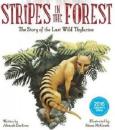 This image has been sourced from Reading Time website5776706086827181327.jpg
This image has been sourced from Reading Time website5776706086827181327.jpg Stripes in the Forest : The Story of the Last Wild Thylacine Aleesah Darlison , 2016 single work picture book
Stripes in the Forest : The Story of the Last Wild Thylacine Aleesah Darlison , 2016 single work picture bookAbstract: Stripes in the Forest by award-winning author, Aleesah Darlison, is the story of an iconic species lost. Told from the perspective of the last wild, female thylacine, it provides readers with an insight into the rare beauty and uniqueness of these amazing animals and explains their fight for survival and provides important lessons for future generations.
Shane McGrath's illustrations show the landscape of the thyalcine's habitat changing over time. The book includes white settlers coming to Australia, and men hunting thyalcines. It is a powerful book.
There are 'Thyalcine Facts' at the back of the book, including a statement about National Threatened Species Day and a call to "reflect on what happened in the past and how we can protect our threatened species in the future."
-
 This image has been sourced from online.804852524278769702.jpg
This image has been sourced from online.804852524278769702.jpg
 This image has been sourced from online.6176042088908741764.jpg
This image has been sourced from online.6176042088908741764.jpg
 This image has been sourced from online.2557063746988899331.jpg
This image has been sourced from online.2557063746988899331.jpg
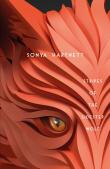 Cover image courtesy of publisher.4392349192512980856.jpg
Cover image courtesy of publisher.4392349192512980856.jpg
 Image courtesy of publisher's website.6869129182623161774.jpg
Image courtesy of publisher's website.6869129182623161774.jpg Stripes of the Sidestep Wolf Sonya Hartnett , 1999 single work novel
Stripes of the Sidestep Wolf Sonya Hartnett , 1999 single work novelAbstract: In a dying country town lives a young man fighting the future, a young man fighting the past, and a long-lost animal that can teach them both the art of survival. The animal swerved into the bracken, its smooth long tail slipping away. Satchel listened a minute for any sign of it but it was gone ... He wondered what its name had been, who had owned it, what hard history had left it alone here, at the foot of the hanging volcano.
-
-
You might be interested in...

- An Overview
- A Brief History Part I: Settlement to Post-War (Forthcoming) In Progress
- A Brief History Part II: 1970s to Present Day (Under Development) In Progress
- Aboriginal Stories and the Environment
- Landscapes and Settings
- Biodiversity and Threatened Species
- Caring for the Environment
- Sustainability
- Built Environments
- Environmental Degradation
- Disasters, Climate Change and Global Warming
- Poetry, Film and Other Narrative Forms
- Education and the Australian Curriculum
- Authors, Illustrators and Publishers
- Award-winning Environmental Literature
- Bibliography
- Project Team and Acknowledgments

- An Overview
- A Brief History Part I: Settlement to Post-War (Forthcoming) In Progress
- A Brief History Part II: 1970s to Present Day (Under Development) In Progress
- Aboriginal Stories and the Environment
- Landscapes and Settings
- Biodiversity and Threatened Species
- Caring for the Environment
- Sustainability
- Built Environments
- Environmental Degradation
- Disasters, Climate Change and Global Warming
- Poetry, Film and Other Narrative Forms
- Education and the Australian Curriculum
- Authors, Illustrators and Publishers
- Award-winning Environmental Literature
- Bibliography
- Project Team and Acknowledgments

